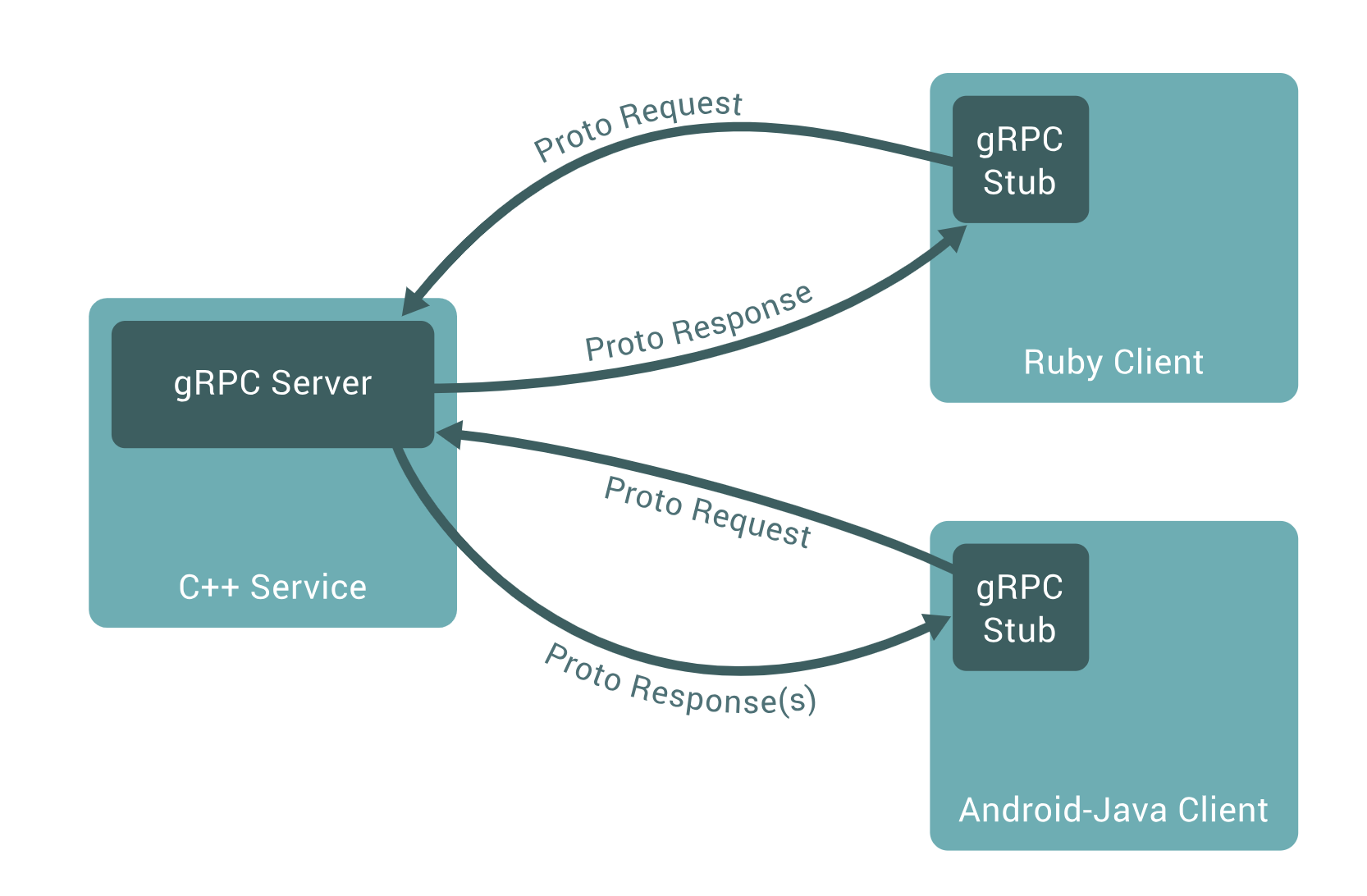介绍
gRPC
gRPC是什么可以用官网的一句话来概括
A high-performance, open-source universal RPC framework
所谓RPC(remote procedure call 远程过程调用)框架实际是提供了一套机制,使得应用程序之间可以进行通信,而且也遵从server/client模型。使用的时候客户端调用server端提供的接口就像是调用本地的函数一样。如下图所示就是一个典型的RPC结构图。

gRPC vs. Restful API
既然是server/client模型,那么我们直接用restful api不是也可以满足吗,为什么还需要RPC呢?
gRPC和restful API都提供了一套通信机制,用于server/client模型通信,而且它们都使用http作为底层的传输协议(严格地说, gRPC使用的http2.0,而restful api则不一定)。不过gRPC还是有些特有的优势,如下:
- gRPC可以通过protobuf来定义接口,从而可以有更加严格的接口约束条件。
- 另外,通过protobuf可以将数据序列化为二进制编码,这会大幅减少需要传输的数据量,从而大幅提高性能。
- gRPC可以方便地支持流式通信(理论上通过http2.0就可以使用streaming模式, 但是通常web服务的restful api似乎很少这么用,通常的流式数据应用如视频流,一般都会使用专门的协议如HLS,RTMP等,这些就不是我们通常web服务了,而是有专门的服务器应用。)
Tracing
微服务遍地都是,一个功能,一个接口都可能是一个微服务,微服务之间的调用混乱,无法追踪,很难找出瓶颈点,因此迫切需要一种方法来追踪服务之间的调用链路。
Metadata 可以理解为一个 HTTP 请求的 Header(它的底层实现就是 HTTP/2 的 Header),用户可以通过访问和修改每个 gRPC Call 的 Metadata 来传递额外的信息:比如认证信息,比如用于追踪的 Request ID。
Interceptor 有点类似于我们平时常用的 HTTP Middleware,不同的是它可以用在 Client 端和 Server 端。比如在收到请求之后输出日志,在请求出现错误的时候输出错误信息,比如获取请求中设置的 Request ID。
1
2
3
4
5
6
7
8
9
10
11
12
13
14
15
16
17
18
19
|
type UnaryInvoker func(ctx context.Context, method string, req, reply interface{}, cc *ClientConn, opts ...CallOption) error
// UnaryClientInterceptor intercepts the execution of a unary RPC on the client. invoker is the handler to complete the RPC
// and it is the responsibility of the interceptor to call it.
// This is an EXPERIMENTAL API.
type UnaryClientInterceptor func(ctx context.Context, method string, req, reply interface{}, cc *ClientConn, invoker UnaryInvoker, opts ...CallOption) error
// UnaryHandler defines the handler invoked by UnaryServerInterceptor to complete the normal
// execution of a unary RPC. If a UnaryHandler returns an error, it should be produced by the
// status package, or else gRPC will use codes.Unknown as the status code and err.Error() as
// the status message of the RPC.
type UnaryHandler func(ctx context.Context, req interface{}) (interface{}, error)
// UnaryServerInterceptor provides a hook to intercept the execution of a unary RPC on the server. info
// contains all the information of this RPC the interceptor can operate on. And handler is the wrapper
// of the service method implementation. It is the responsibility of the interceptor to invoke handler
// to complete the RPC.
type UnaryServerInterceptor func(ctx context.Context, req interface{}, info *UnaryServerInfo, handler UnaryHandler) (resp interface{}, err error)
|
Golang 的实现是把 Metadata 塞在了 context 里面,只需要使用 metadata.FromOutgoingContext(ctx) 和 metadata.FromIncomingContext(ctx) 就能够访问本次请求的 Metadata。概念清楚之后代码应该非常好写了:
1
2
3
4
5
6
7
8
9
10
11
12
13
14
15
16
17
18
19
20
21
22
23
24
25
26
27
28
29
30
31
32
33
34
35
36
37
38
39
40
41
42
43
44
| const requestIdKey = "requestId"
func RequestIDClientInterceptor() grpc.UnaryClientInterceptor {
return func(
ctx context.Context,
method string, req, resp interface{},
cc *grpc.ClientConn, invoker grpc.UnaryInvoker, opts ...grpc.CallOption,
) (err error) {
md, ok := metadata.FromOutgoingContext(ctx)
if !ok {
md = metadata.Pairs()
}
value := ctx.Value(requestIdKey)
if requestID, ok := value.(string); ok && requestID != "" {
md.Set(requestIdKey, requestID)
}
return invoker(metadata.NewOutgoingContext(ctx, md), method, req, resp, cc, opts...)
}
}
func RequestIDServerInterceptor() grpc.UnaryServerInterceptor {
return func(
ctx context.Context,
req interface{}, info *grpc.UnaryServerInfo, handler grpc.UnaryHandler,
) (resp interface{}, err error) {
md, ok := metadata.FromIncomingContext(ctx)
if !ok {
md = metadata.Pairs()
}
requestIDs := md[requestIdKey]
if len(requestIDs) >= 1 {
ctx = context.WithValue(ctx, requestIdKey, requestIDs[0])
}
return handler(ctx, req)
}
}
|
